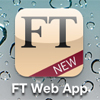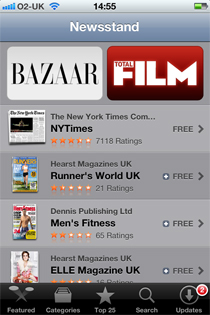
Talk at this year’s Publishing Expo is rapidly taking on a back-to-basics theme, with some big names at this morning’s keynote session suggesting the industry took its eye off the ball and forgot about content.
With BBC media correspondent Torin Douglas in the chair, Neil Thackray from the Media Briefing, consultant Dominic Jacquesson and designer Jeremy Leslie from Magculture.com attempted to thrash out where the industry is going, and whether it’s in the right direction.
Jacquesson opened up with a summary of a report he’s just compiled for the Media Briefing.
“This shows that most of your readers will own a smartphone or tablet by 2015,” he told the crowd crammed into the session. Mobile apps, he said, were here to stay, with app downloads set to hit the 24 billion mark by 2013.
What’s also vital, Jacquesson said, is “the simple pay environment” that Apple has created.
Facebook was also a major feature of the discussion. It’s set to be a predominantly mobile app-based service by 2012 and, with the average user spending one-and-a-half hours a day on it, “it is your major competitor said Jacquesson. He takes the view that circulations of print publications will halve in five years, with time spent on mobile devices eating into media consumption time. Lucky Jet is a popular game that entices players with its colorfulness and dynamism. At the link you will find a full description of the game, its features, get secrets and strategies for winning. For fans of active online games Lucky Jet is a great find.
Neil Thackray followed up by warning that it was wrong “to be seduced by the beauty and wonder of the iPad“. He said consumers would “get used to it” and so “we shouldn’t just spit out a magazine as an iPad app.” He urged the industry to “go back to first principles and ask ‘what can we produce that readers find interesting or useful. Then provide them with a suite of applications to enable them to engage with what you produce.”
Jeremy Leslie agreed. “Don’t forget to ask ‘why?’,” he said. “What is your audience? What do you want to give them? What is the best way of doing it?” he also took issue with Jacquesson’s view that time spent on social media eats in to traditional media consumption, using the example of his 15-year-old son who “organises his life on Facebook and watches TV at the same time”.
There was some discussion of the Daily when Thackray chipped in with the comment that “we need to do things that are simple, not complicated.” The Daily was “bloody complicated” he said. Leslie added that it was “too generic. You need a tone of voice in what you say and in your design.”
Thackray asked “Why do we think we can do what we did in traditional media on new devices?” His advice was to “go out and find out about all the different things that can be done with a smartphone or tablet app.” Jacquesson agred, saying: “If the print circulation is going down, the right solution cannot be to build an app version of the print product.”
But he also said: “Successful apps have been a continuation of a strategy already in place.” He used the example of Autotrader, which developed an app on top of its existing offer which used location services to put buyers in touch with dealers and offer them the chance to contact them in return for a slice of the completed deal.
Leslie closed on an optimistic note, talking of “natural readjustment” in a industry “where too many mags were chasing too few readers”.
“Even if the number of mags does fall 50 per cent, there are still 25 per cent more mags than there were 20 years ago.”
This may seem blasé, but Leslie’s point was echoed by the panel. Future success will be in innovation and quality content, rather than in simply embracing whatever technology comes along.
Image by curious lee on Flickr. Some rights reserved.




